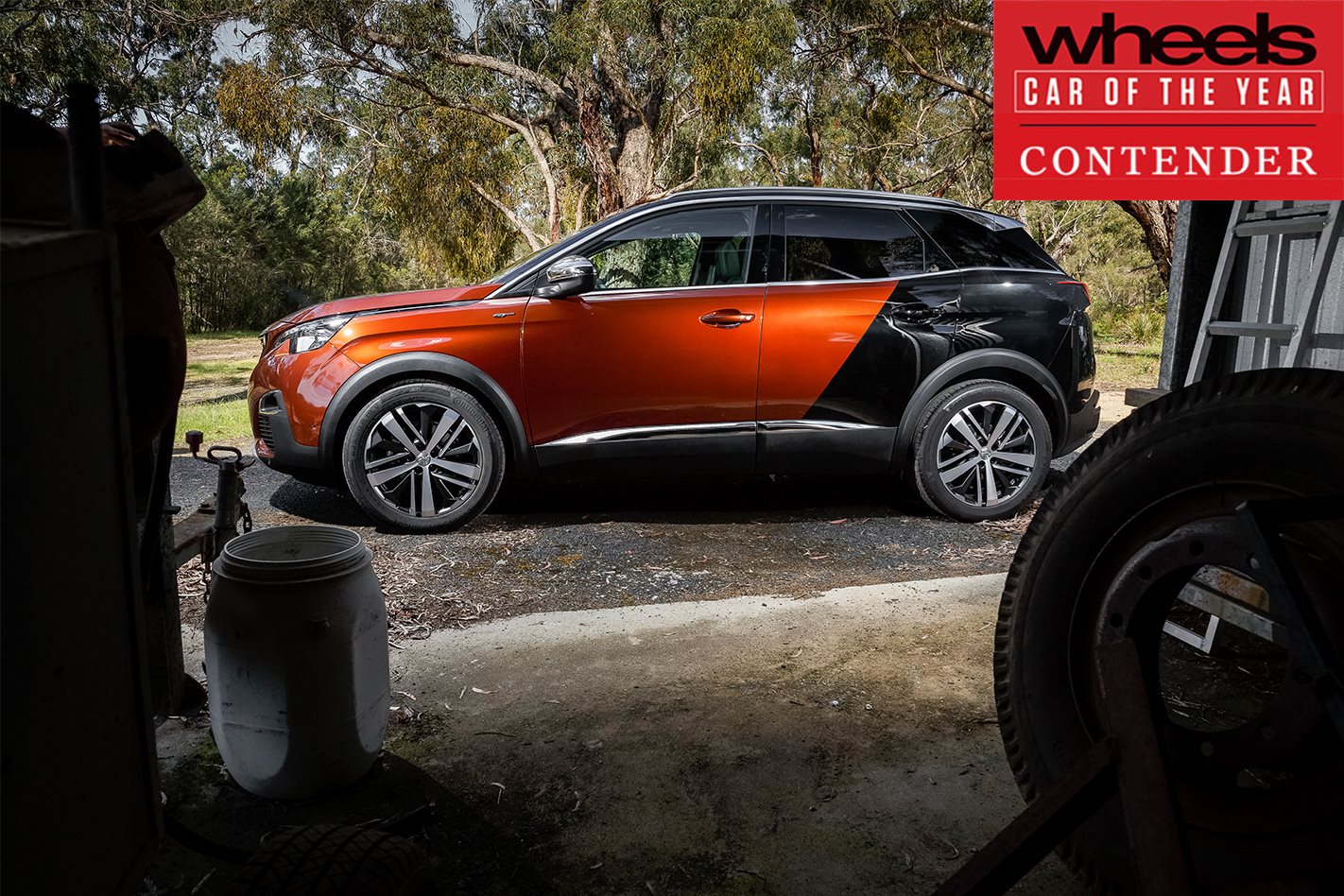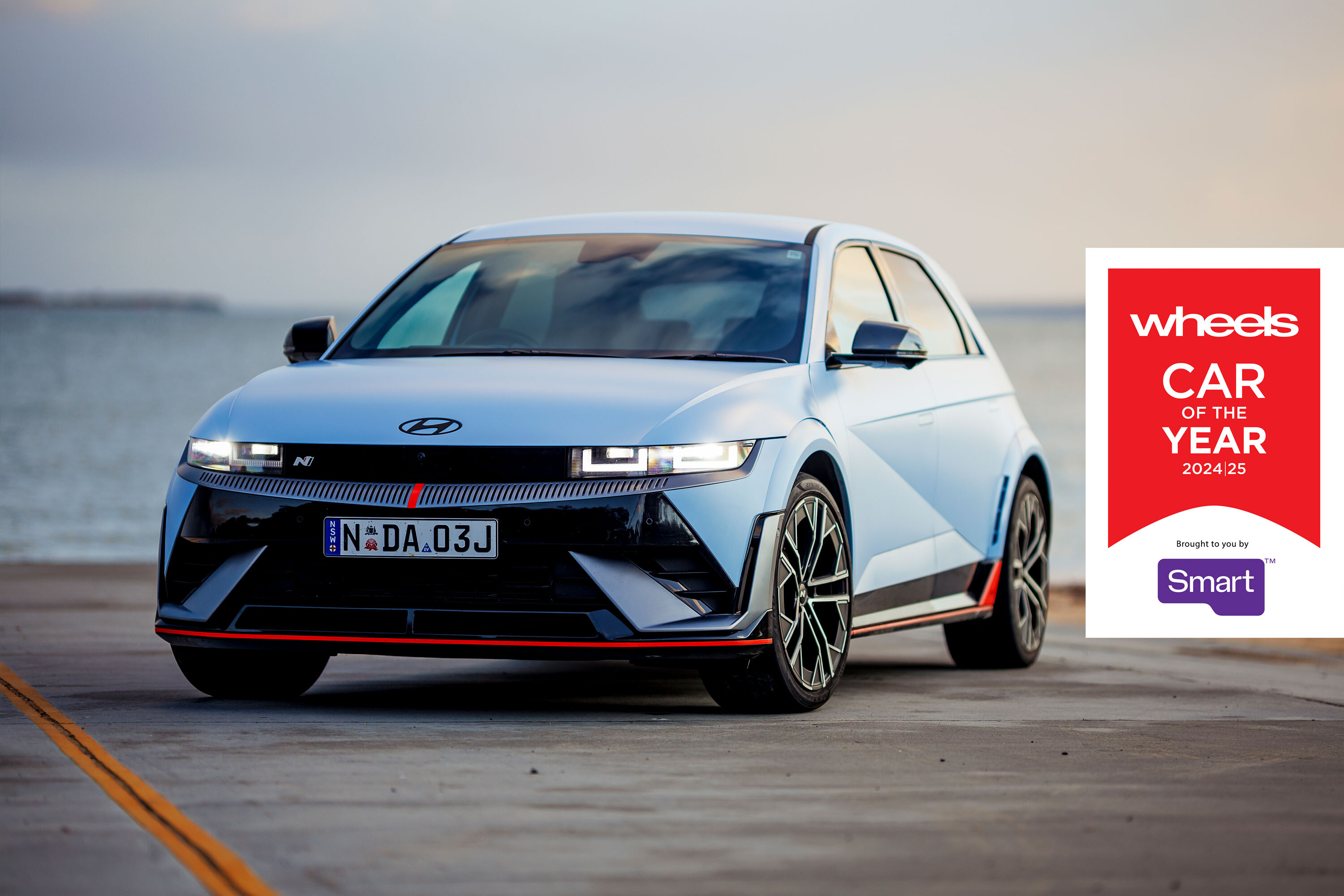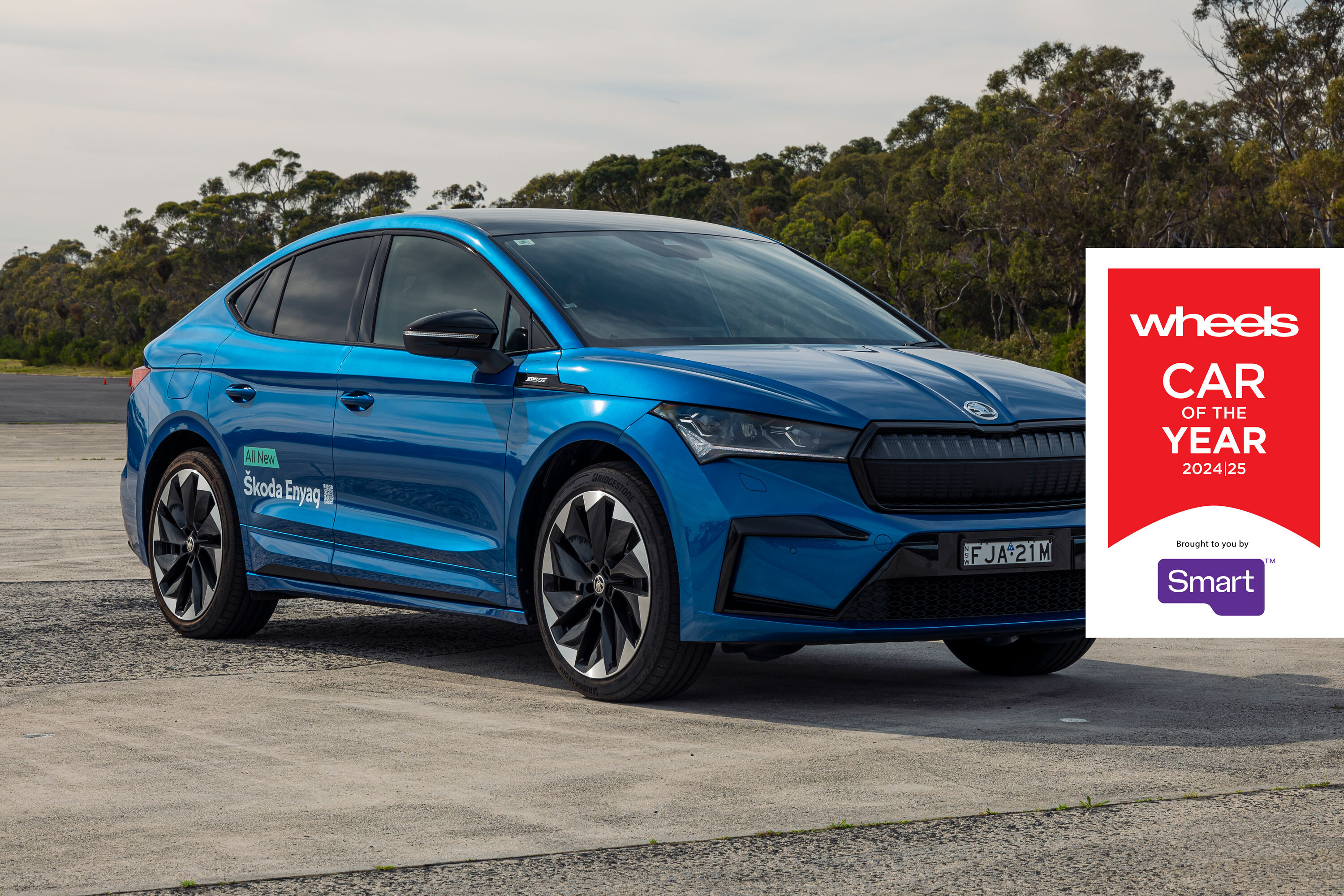FIVE years ago Australians were ready to write Peugeot off. Irrelevant. Uncompetitive. Compromised. Expensive.
The 130-year-old carmaker had not only lost its way but seemingly also its mind. Then came the all-new second-gen Peugeot 308 in 2014, nearly scooping COTY with its high levels of efficiency, refinement and involvement.
Sadly, continuing slow sales simply reflect the damage that the 2000s cars inflicted on the brand. However, in SUV-obsessed Oz, the Peugeot 3008 should drive Peugeot’s consumer renaissance, even if its walrus-like predecessor’s name carries through.
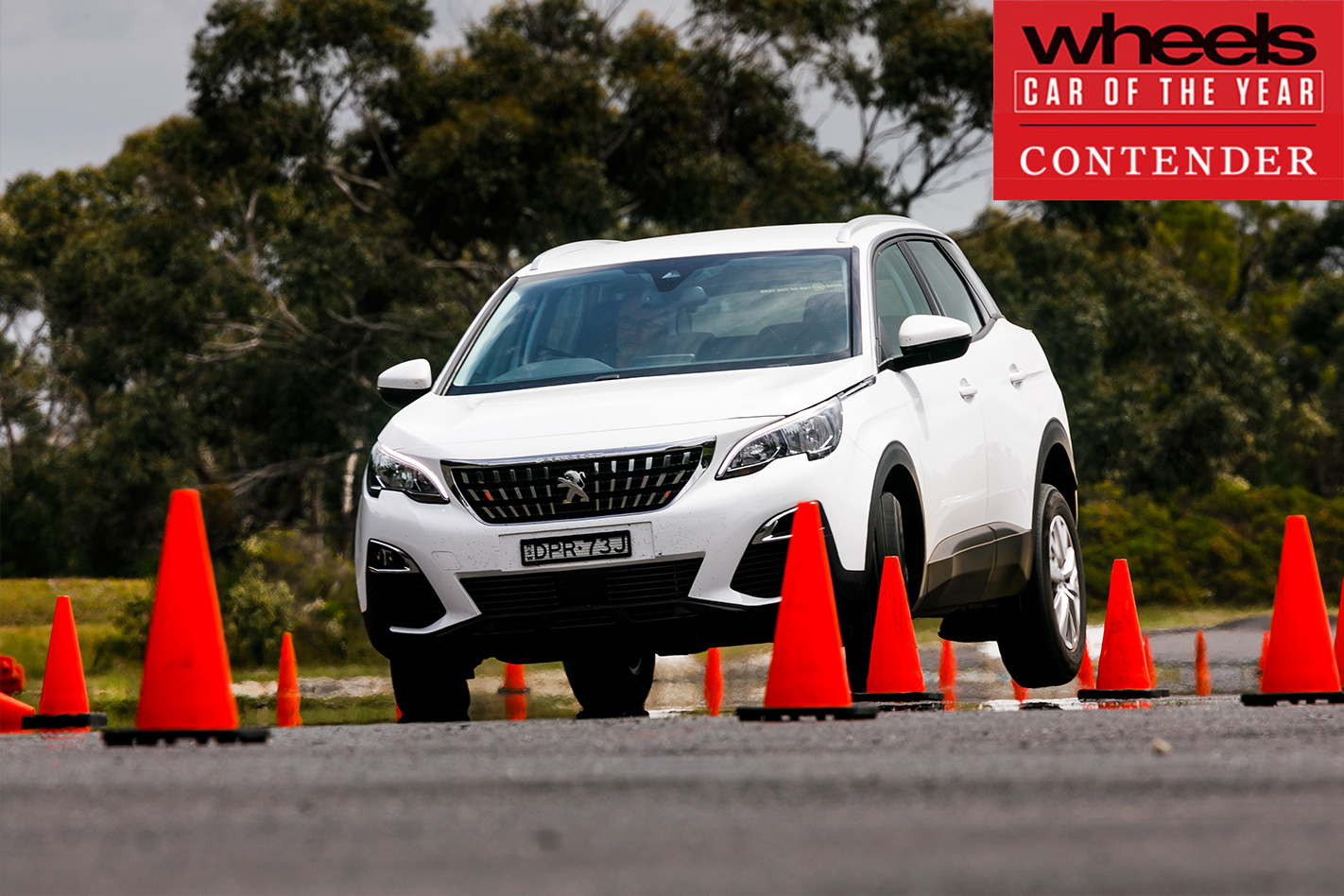
But never mind how it stacks up against the latter; the ambitious Frenchy possesses a charisma the BMW X3 – another COTY challenger – would kill for.
While families are more likely to appreciate the 3008 cabin’s airy spaciousness (offering room for adults out back as well as a sizeable luggage area behind), well-padded seats, plentiful storage and Millennial-friendly multimedia access, it’s the exquisite detailing that might make buyers think twice about a Range Rover Evoque.

Speaking of having your cake and eating it, the 3008’s charm offensive steps up from behind the controversially low-set steering wheel – the key is to take a few moments to familiarise yourself with the layout; then it becomes second-nature. Prod the (annoyingly stubborn) starter button and the 1.6-litre turbo-petrol four fires into action, offering turbine smoothness to match its unexpectedly athletic performance.
We’ve said it before; Peugeot’s Toyota-supplied six-speeder is the greatest auto ever fitted to a French vehicle, providing seamless point-to-point operation.
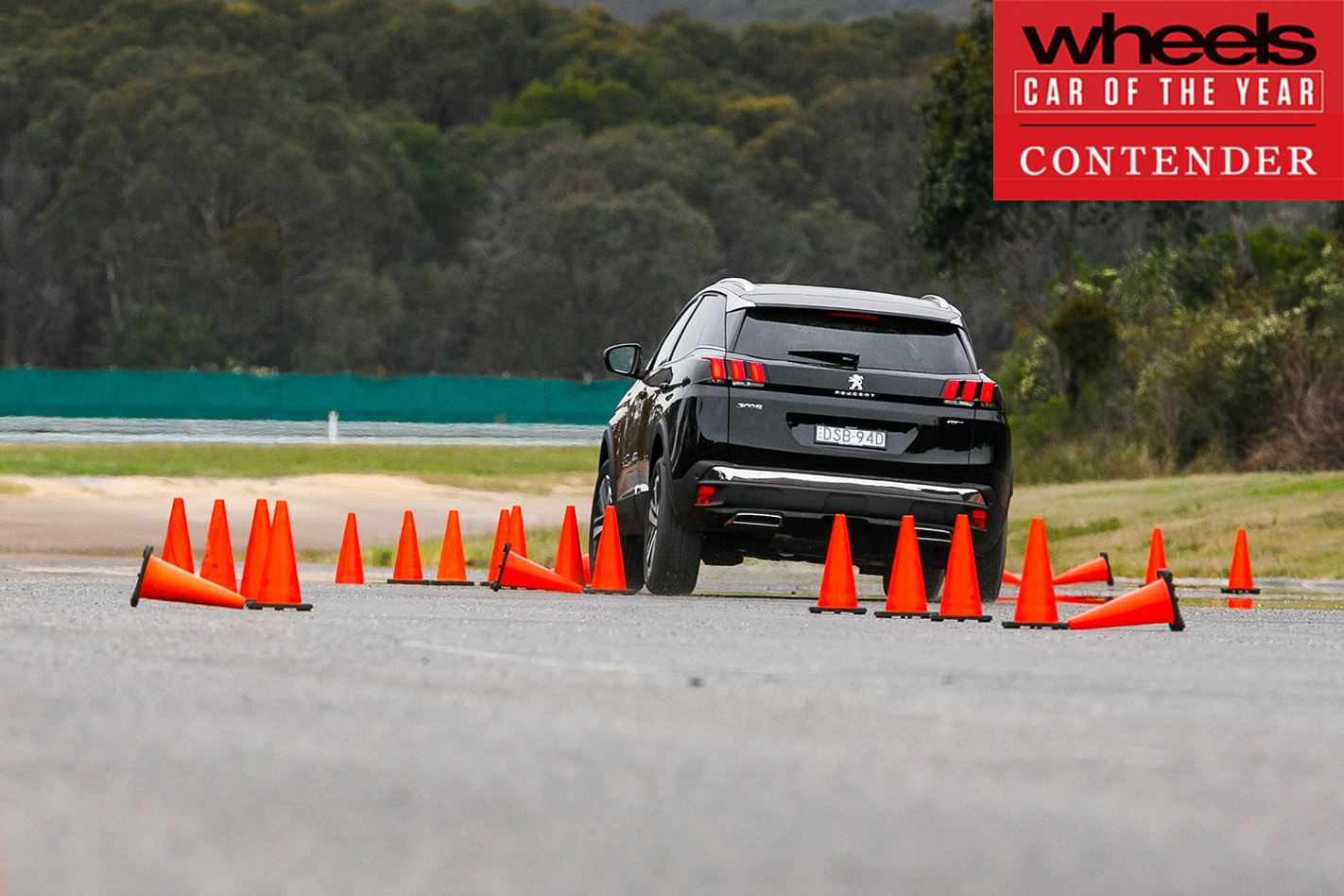
Whether you become a fan of the Peugeot’s quick and eager steering depends how much Sport you seek in your Utility Vehicle. But as this is Wheels, we found the helm marvellously interactive and its contribution to agility outstanding. A more car-like SUV for the cash simply doesn’t exist. Plus, despite tipping the scales some 180kg below the equivalent (if larger) Mazda CX-5, the lightweight chassis (on 308-derived EMP2 architecture) remains composed, serving up impressively supple and isolated ride comfort.
The the 3008 barely puts a wheel wrong on bitumen. Reservations may exist with just how much play the Peugeot permits on gravel, not helped by a late-acting (and rather severe) ESC/traction-control tune. Again, the bantamweight crossover’s sheer zeal and controllability means that there is nothing too alarming here, but the initial looseness might spook the unwary.
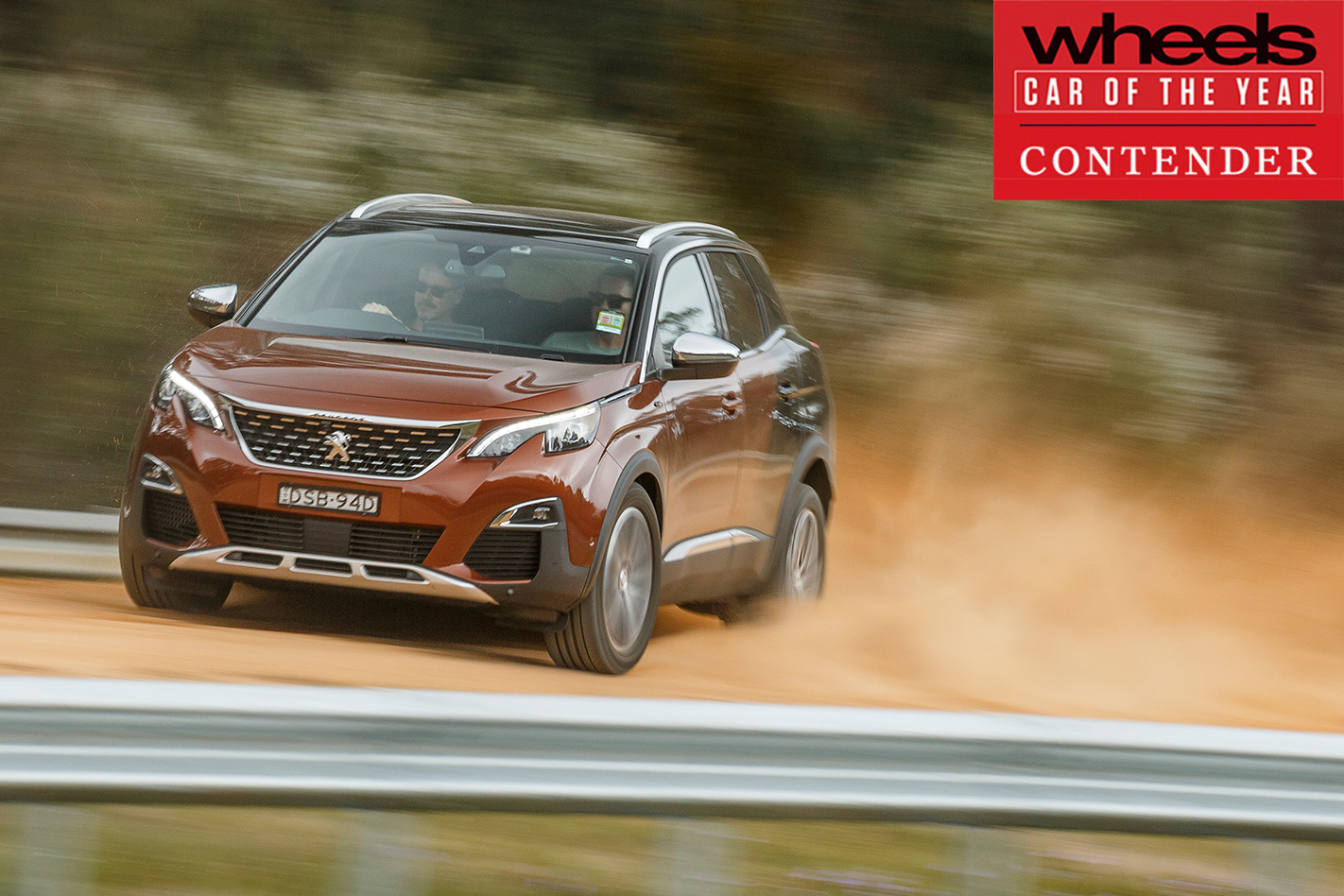
These, along with a few iffy build-quality quirks and equipment shortfalls, clip the wings somewhat of a model that otherwise defines Peugeot’s incredible resurrection. Yet we remain incredibly fond of the wonderfully textured 3008.
An electrifying proposition
We lament the decision to sidestep the 96kW/230Nm 1.2-litre three-pot turbo petrol offered in Europe, which would have provided a whole new level of efficiency and dynamic alacrity.
However, another intriguing powertrain under evaluation for Oz is the coming plug-in hybrid variant, employing the 1.6-litre turbo-petrol and a pair of motors on the rear axle, simultaneously creating an AWD version. A total output around 220kW gives it a rapid claimed 0-100km/h of 6.0sec.

